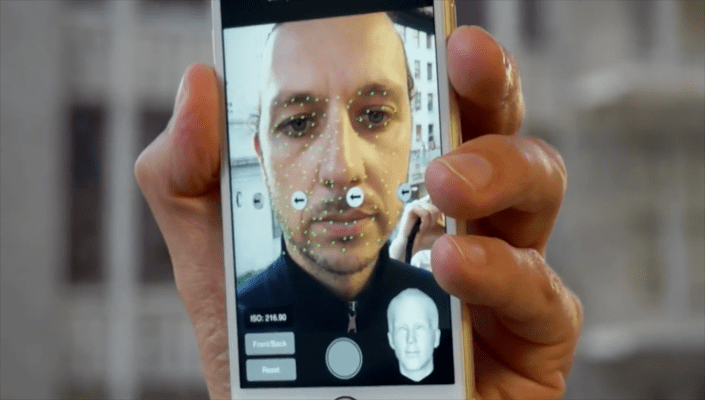Snapchat has acquired 3D photo app maker Seene (also known as Obvious Engineering) a couple of months ago, TechCrunch has learned.
Seene lets you capture 3D models from your phone with a simple smartphone camera. Snapchat could use Seene’s format for a brand new category of selfie lenses, a new 3D photo format, and potentially for future virtual reality projects.
According to our sources, Snapchat was interested in Seene’s computer vision technology and its engineering team more than for its consumer product. As TechCrunch’s Matthew Panzarino said when he covered Seene’s app back in 2013: “I’m not sure what kind of future an app like Seene has at scale without the welcoming arms of a larger entity.”
So step forward Snapchat as that larger entity, with its ongoing need for novelty to keep its users engaged and sharing fresh content — the lifeblood of its social platform.
Seene’s engineering team is led by CTO and co-founder Sam Hare, whose computer vision PhD specialized in real-time applications of the technology for gaming use cases. A note on Hare’s LinkedIn profile about the “deep stack of mobile-focused computer vision tech for structure from motion and 3D reconstruction” which he helped developed for Seene goes on to say that: “We have a great deal more R&D in the pipeline which will be released soon. Please get in touch if you’re interested in finding out more.”
TechCrunch understands that Seene’s team, which is split between the U.S. and London, will relocate to Los Angeles, where Snapchat is headquartered. Although not all team members are being acqui-hired — with at least one senior Seene engineer not joining Snapchat.
We also understand the price for the acquisition is low, and that it’s a cash and share deal. According to AngelList, the startup had raised $600,000 from Knight Foundation, Kima Ventures, EC1 Capital, OREFA, Scott McPhee, Richard Fearn, Julian Carter and potentially others.
Snapchat declined to comment when contacted by TechCrunch about the acquisition. It is not clear whether the Seene app will continue to be maintained.
3D geometry plus virtual experiences
There are many different use cases for Seene’s technology, but they all rely on the same differentiating factor. Seene scans and reconstructs full 3D geometry on your phone. Unlike Project Tango or Microsoft’s Kinect, Seene doesn’t need special infrared sensors and multiple cameras. Similarly, Seene doesn’t need a cloud backend to process 3D scans and recreate 3D objects — everything happens on the phone. For instance, you can scan your face in a few seconds and create a 3D selfie:
Seene is then well-positioned for true augmented reality features. Most augmented reality apps use your phone’s camera to recognize a 2D image (a QR code for instance) and inject a 3D object on your phone display. Seene can go a step further as it can inject 3D objects around real life things.
While this is a silly example, the sparkling whirlwind around the can of Dr. Pepper in the following video is quite impressive:
It would make a lot of sense to use Seene’s technology to improve Snapchat’s selfie lenses — including for advertising purposes. (Snapchat debuted sponsored lenses in fall last year, and charges a pretty penny to advertisers wanting to get their brand on people’s faces.)
Also last year, Snapchat acquired Looksery to power its selfie lenses. Combining Looksery’s technology with Seene’s technology would allow Snapchat to create more complex lenses with a real sense of depth. Think ads that people want to touch.
Seene also works with the camera at the back of your phone to capture 3D scenes. Combined with your phone’s accelerometers, it creates a sort of hybrid between a photo and a video; something more interactive.
This was the core feature of Seene’s consumer app, a sort of Instagram for 3D scenes:
Down the line, there could be scope to use Seene’s core technology to create content for virtual reality applications — an area Snapchat has been rumoured to be exploring. While Seene has touted its tech “putting your reality into virtual experiences.”
Virtual reality is a two-sided coin. While many tech giants are focusing on creating VR headsets, other companies are also working on creating compelling content for these headsets. Seene is well-positioned for the content-side of VR, letting anyone create VR-ready content using a phone.
Zooming out, it’s clear that computer vision startups remain a big target for talent acquisition as applications for algorithms that enable machines to understand and map the world around them proliferate — whether it’s for 3D selfies or autonomous cars.
Earlier this month, for example, Intel picked up Itseez, which makes algorithms for driverless car navigation. While last year it emerged that Apple had quietly bought motion capture tech company Faceshift — a spin out from the computer vision lab at engineering university ETH Zurich.
